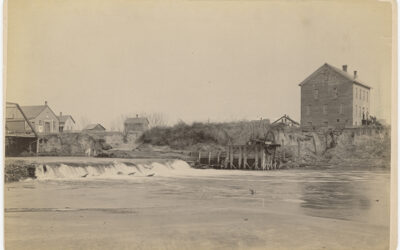HISTORY NEBRASKA MANUSCRIPT FINDING AID
RG5643.AM: Harry M. Shimmin and Muirl (Dorrough) Shimmin
Papers: 1904-1921, 1942, 2000; mostly 1911-1916
Hooker and Grant Counties, Neb.: Farmer, teacher
Size: 0.4 cu.ft.; 1 box
BIOGRAPHICAL NOTE
A native of Green County, Indiana, (Willo) Muirl Dorrough came to the Sandhills of Nebraska with her family in 1909. The Dorroughs settled on Kinkaid land in Grant County near Whitman. Having finished high school and with some teacher training, twenty-one-year-old Muirl secured a teaching position for 1910 in District Six near Mullen in Hooker County for forty-five dollars a month. Among her students were five children of Robert and Mattie Shimmin, including eighteen-year-old Harry. When the growing friendship of Harry and Muirl was discovered by Harry’s parents, Muirl was evicted from the Shimmin home, where she had been boarding.
Muirl completed her contract at the school, while communicating secretly with Harry. From 1910 to 1913 she taught at various schools in Hooker, Grant, and Cherry Counties. She spent the 1911-12 school year at a school nine miles north of Whitman, where her seven-month contract paid her fifty dollars per month. Another contract in Grant County for the 1912-13 school year provided her with another school near Whitman that allowed her to live at home. During this year she and Harry were engaged. After their marriage on February 3, 1914, Muirl never taught professionally again.
The 1920 census shows the Shimmins living in Steen Precinct, Cherry County, with their two daughters Mattie and Marrion. Muirl died in November of 1925. By 1930 Harry was married to a Mae V. Shimmin, a native of Illinois, and the household included Harry’s five children as well as his two step-children. Correspondence in the collection places Harry in Prairie View, Illinois, in 1942, perhaps indicating that the family settled in the home area of his second wife. Harry M. Shimmin died in 1965.
SCOPE AND CONTENT NOTE
This collection consists of one box of manuscript material arranged in three series: 1) Dorrough/Shimmin Correspondence, 1911-1916, n.d.; 2) Postcards, 1909-1917, 1942, n.d.; and 3) Miscellany.
This collection relates primarily to the courtship between Muirl Dorrough and Harry Shimmin prior to their marriage in 1914. The Dorrough/Shimmin correspondence documents Muirl’s and Harry’s desire to be together, in spite of Harry’s parents’ objection to the romance. The letters, in discussing Muirl’s teaching activities and Harry’s farming and other occupations during their separations, also documents what life was like living in the Sand Hills during the early 1910s.
The Postcards of Series 2 are short missives from family and friends containing little substantial information.
The Miscellany of Series 3 includes Harry’s school records, 1904-1906; a letter from Muirl to Jessie, Harry’s sister, 1921; and an article from Nebraska History magazine (2000) about Muirl Dorrough and the Alliance Junior Normal School.
INVENTORY
Series 1 – Dorrough/Shimmin Correspondence, 1911-1916, n.d.
Box 1
Folder
- 1911
- 1912, Jan.-June
- 1913, Jan.-Apr.
- 1913, May-Oct.
- 1913, Nov.-1914
- 1916, n.d.
Series 2 – Postcards, 1909-1917, 1942, n.d.
- 1909-1917, 1942, n.d.
Series 3 – Miscellany, 1904-1906, 1921, 2000
- Harry Shimmin’s school records, 1904-1906
Letter from Muirl to Jessie (Shimmin), 1921
Nebraska History magazine article on Muirl Dorrough and the Alliance Junior Normal School
Subject headings:
Courtship letters
Grant County (Neb.)
Hooker County (Neb.)
Rural schools — Nebraska — Grant County
Rural schools — Nebraska — Hooker County
Sandhills (Neb.)
Shimmin, Harry M., 1892-1965
Shimmin, Muirl (Dorrough), 1889-1925
Teachers — Nebraska — Grant County
Teachers — Nebraska — Hooker County
AIF 08-20-2009
10-07-2009 Revised TMM/tmm




